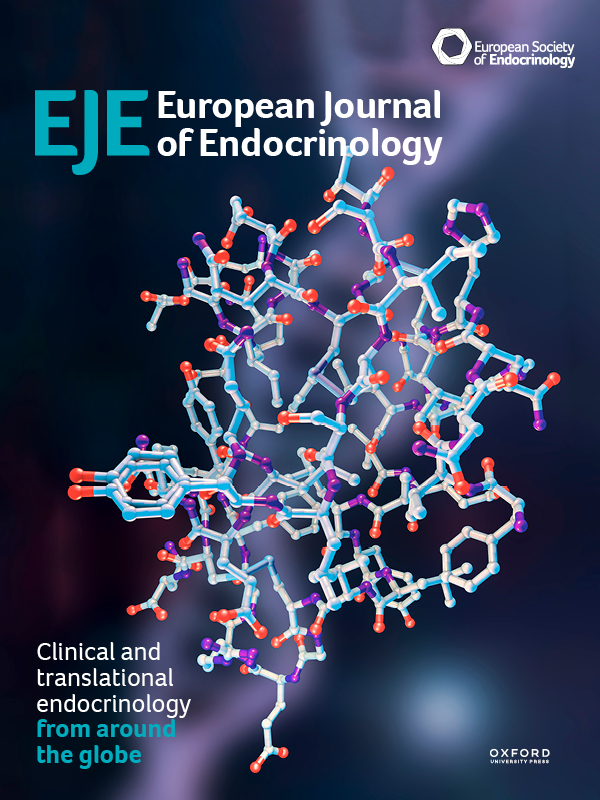抗骨质吸收剂对绝经后骨质疏松症妇女死亡风险的影响:一项全国性队列研究的启示。
IF 5.2
1区 医学
Q1 ENDOCRINOLOGY & METABOLISM
引用次数: 0
摘要
重要意义骨质疏松症相关骨折与绝经后女性死亡风险增加有关,但抗骨质疏松药物对死亡率的影响尚未完全明了。设计这是一项全国性队列研究,使用的数据来自全国过渡年龄筛查计划(2008-2017 年)。设置数据来自韩国绝经后妇女的全国队列。其中,15 895 名患者使用双膦酸盐或选择性雌激素受体调节剂等抗逆转录酶药物至少 1 年,研究人员采用倾向评分法将其与未使用抗逆转录酶药物的患者进行 1:1 比对。主要结果和测量采用多变量考克斯比例危险回归模型评估死亡率结果,重点是全因死亡率和特定原因死亡率,尤其是心血管疾病(CVD)和受伤/骨折相关死亡。结果 抗还原剂使用者中有102人死亡(死亡率为每千人年1.41例),而非使用者中有221人死亡(死亡率为每千人年3.14例),危险比(HR)为0.43(95% CI,0.34-0.54)。抗还原剂使用者的心血管疾病死亡风险降低了 52%(HR,0.48;95% CI,0.34-0.69),受伤/骨折相关死亡风险降低了 54%(HR,0.46;95% CI,0.27-0.76)。分析表明,使用抗逆转录病毒药物的时间越长,全因死亡和心血管疾病死亡风险就越低。长期服用抗逆转录酶药物似乎更有利于降低死亡率,这凸显了持续治疗在这一人群中的潜在重要性。本文章由计算机程序翻译,如有差异,请以英文原文为准。
Impact of antiresorptive agents on mortality risk in postmenopausal women with osteoporosis: insights from a nationwide cohort study.
IMPORTANCE
Osteoporosis-related fractures are associated with increased mortality risk among postmenopausal women, yet the impact of antiosteoporotic medications on mortality is not fully understood.
OBJECTIVE
This study evaluates the effect of antiresorptive agents (ARs) on mortality risk in postmenopausal women with osteoporosis.
DESIGN
This is a nationwide cohort study using data from the National Screening Program for Transitional Ages (2008-2017).
SETTING
Data were derived from a national cohort of postmenopausal women in South Korea.
PARTICIPANTS
This study included 117 871 postmenopausal women diagnosed with osteoporosis. Of them, 15 895 patients who used ARs, such as bisphosphonates or selective estrogen receptor modulators, for at least 1 year were matched 1:1 with nonusers using propensity scores.
EXPOSURES
Exposure to ARs for at least 1 year was compared with no AR use.
MAIN OUTCOMES AND MEASURE
Mortality outcomes were assessed using multivariable Cox proportional hazard regression models, focusing on all-cause mortality and cause-specific mortality, particularly cardiovascular disease (CVD) and injury-/fracture-related deaths.
RESULTS
In AR users, there were 102 deaths (mortality rate 1.41 per 1000 person-years), compared with 221 deaths in non-users (mortality rate 3.14 per 1000 person-years), yielding a hazard ratio (HR) of 0.43 (95% CI, 0.34-0.54). Antiresorptive agent users showed a 52% reduction in CVD mortality risk (HR, 0.48; 95% CI, 0.34-0.69) and a 54% reduction in injury-/fracture-related mortality risk (HR, 0.46; 95% CI, 0.27-0.76). The analysis indicated a consistent decrease in all-cause and CVD mortality risks with longer durations of AR use.
CONCLUSIONS AND RELEVANCE
The use of ARs in postmenopausal women with osteoporosis is associated with significantly lower risks of all-cause mortality, especially from cardiovascular events and fractures. The mortality reduction benefits appear to be enhanced with prolonged AR therapy, highlighting the potential importance of sustained treatment in this population.
求助全文
通过发布文献求助,成功后即可免费获取论文全文。
去求助
来源期刊

European Journal of Endocrinology
医学-内分泌学与代谢
CiteScore
9.80
自引率
3.40%
发文量
354
审稿时长
1 months
期刊介绍:
European Journal of Endocrinology is the official journal of the European Society of Endocrinology. Its predecessor journal is Acta Endocrinologica.
The journal publishes high-quality original clinical and translational research papers and reviews in paediatric and adult endocrinology, as well as clinical practice guidelines, position statements and debates. Case reports will only be considered if they represent exceptional insights or advances in clinical endocrinology.
Topics covered include, but are not limited to, Adrenal and Steroid, Bone and Mineral Metabolism, Hormones and Cancer, Pituitary and Hypothalamus, Thyroid and Reproduction. In the field of Diabetes, Obesity and Metabolism we welcome manuscripts addressing endocrine mechanisms of disease and its complications, management of obesity/diabetes in the context of other endocrine conditions, or aspects of complex disease management. Reports may encompass natural history studies, mechanistic studies, or clinical trials.
Equal consideration is given to all manuscripts in English from any country.
 求助内容:
求助内容: 应助结果提醒方式:
应助结果提醒方式:


